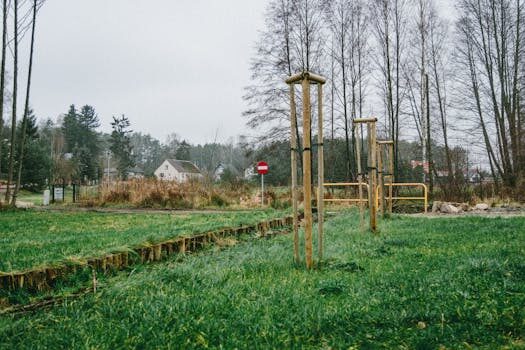Past tense in the Polish language: a comprehensive overview

Understanding the Past Tense in the Polish Language is crucial for anyone learning this Slavic language. Polish past tense, or "czas przeszły," is used to describe actions that were completed or ongoing in the past. This tense has various forms that depend on factors such as gender, number, and whether the verb is perfective or imperfective.
What is the simple past tense in Polish?
The simple past tense in Polish is known for its ability to express both completed actions and actions that were happening continuously or habitually in the past. This tense is formed by adding specific endings to the verb stem. These endings change based on the gender and number of the subject. Understanding these conjugation rules is essential for proper communication.
For example, the verb "czytać" means "to read." In the past tense, it changes to "czytałem" for a singular masculine subject, "czytałam" for a singular feminine subject, and "czytaliśmy" for a plural masculine subject, highlighting the gender-specific aspect of the language.
In Polish, the context and adverbs often used with the past tense help to determine the aspect of the verb, whether the action was completed (perfective) or ongoing (imperfective).
How do you conjugate Polish verbs in the past tense?
Conjugating Polish verbs in the past tense requires understanding the gender and number of the subject, as well as the aspect of the verb. Regular verbs follow a pattern based on the verb stem, with endings that vary for masculine, feminine, neuter, and plural subjects.
For instance, the verb "pisać" (to write) in the past tense for a singular masculine subject would be "pisałem," and for a singular feminine subject, it would be "pisałam." This demonstrates the necessity to adjust the verb endings to match the subject's gender.
Common Polish verbs in the past tense often include "być" (to be) and "mieć" (to have), which are also crucial for forming past compound tenses.
Learning Polish verb conjugation efficiently involves memorizing these patterns and practicing with various verbs to gain fluency in the past tense.
What are irregular verbs in the Polish past tense?
Irregular verbs in Polish, as in many languages, do not follow the standard conjugation rules and thus require special attention. These verbs often undergo stem changes or have unique endings.

One example of an irregular verb is "iść" (to go), which in the past tense can be "szedłem" (I went, masculine) or "szłam" (I went, feminine). It's important to familiarize oneself with these irregularities to use the past tense correctly.
Other irregular verbs include "jść" (to eat) and "wiedzieć" (to know), which also have distinct past tense forms that learners must commit to memory.
How do auxiliary verbs function in Polish past tense?
Auxiliary verbs in Polish, particularly "być" (to be), are used to form compound tenses such as the past perfect. In the past tense, "być" is often omitted but understood, resulting in what appears to be a simple past form.
For example, "Byłem zadowolony" (I had been satisfied) may appear as "Zadowolony," with "byłem" implied. This nuance is important for conveying the correct tense and meaning.
Auxiliary verbs also assist in the formation of passive constructions and conditional tenses, making them an integral part of Polish grammar.
What are common mistakes in Polish past tense usage?
Common mistakes in Polish past tense usage often involve mismatching the verb ending with the subject's gender or number. Another frequent error is the incorrect use of perfective and imperfective aspects, leading to confusion about the action's completion.
Forgetting to adjust the verb form for irregular verbs is also a common pitfall for learners. Taking note of these typical errors and actively working to correct them can significantly improve one's proficiency in using the Polish past tense.
How can you practice past tense in Polish effectively?
- Utilize online resources and language apps designed for learning Polish.
- Engage in regular speaking practice with native speakers or language exchange partners.
- Incorporate reading and listening exercises that emphasize past tense forms.
- Write daily journals or short stories using the past tense to solidify your understanding.
What other tenses exist in the Polish language?
In addition to the past tense, the Polish language features several other tenses, including the present, future, and conditional tenses. Each tense has its own set of conjugation rules and is used to express actions occurring at different times. The present tense, for instance, is used for current actions, while the future tense indicates actions that will take place.

Understanding the full range of Polish tenses is crucial for achieving fluency and being able to express thoughts and ideas across different time frames.
Diving deeper into Polish past tense usage
Exploring the past tense in the Polish language reveals a rich linguistic structure that captures nuances of time and action. To enhance your learning experience, focus on the regular and irregular past tense forms, and remember to use temporal adverbs to provide context for your actions.
By utilizing learning tools and resources, you can practice effectively and gain a deeper understanding of how the Polish past tense operates within the language's broader grammatical framework.
Related questions about Polish past tense usage
What is the past tense of the word Polish?
The past tense of the verb "to polish" in Polish would be conjugated according to the pattern for regular verbs, taking into account the gender and number of the subject. For example, "polerować" (to polish) in the masculine singular form would be "polerowałem."
Understanding these conjugation patterns is key to mastering Polish past tense usage.
What are the tenses in Polish language?
The Polish language includes several tenses: the past, present, future, and conditional. Each tense is used to express actions in different time frames and has unique conjugation rules.
Mastering these tenses is essential for comprehensive communication in Polish.
How do you say in past tense?
To say something in the past tense in Polish, one must conjugate the verb to reflect the subject's gender and number, as well as the action's aspect. For example, "czytałem" (I read, masculine singular) or "czytałam" (I read, feminine singular).

These forms are crucial for correctly conveying past actions in Polish.
What is the past perfect tense in Polish?
The past perfect tense, or "czas zaprzeszły," is used to describe actions that were completed before a certain point in the past. It is formed using the past tense of the auxiliary verb "być" and the past participle of the main verb.
This tense is less commonly used in modern Polish but is important for understanding historical texts and formal writing.
For a visual aid in understanding the Past Tense in the Polish Language, check out this helpful video:

Leave a Reply